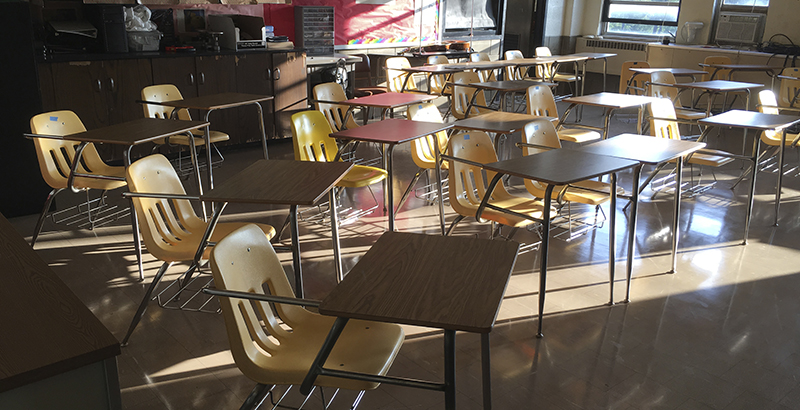Analysis: 10 Lessons from Past Educational Disruptions, and How They Can Help Students Make Up Lost Learning After COVID-19

Updated
Compared to a normal year, students learned less in 2020, were more likely to fail their classes and were less likely to be in school at all. Is this all just temporary? As we move further into 2021, will everything start returning back to normal?
Based on the research on past educational disruptions, the answers are sobering: We should expect large learning losses that will affect the current generation of students for the rest of their lives. Here are 10 key lessons from that body of research:
1. Lost learning time will translate into lost learning.
Years and sometimes even decades after a disruption in schooling, researchers are able to detect noticeable differences in student outcomes. That’s part of why states have mandatory attendance laws in the first place, why they require schools to make up for snow days and why they are concerned about students who are chronically absent. The more school students miss, the less likely they are to graduate from high school and college, earn a good job and remain gainfully employed as adults.
2. The losses are likely to be large.
Academics like to study the effects of random acts of God like earthquakes or floods. Because the events are random and cause measurable disruptions, researchers can be confident that differences in student outcomes can be traced back to the event itself. These studies find large, long-term effects on students in the form of lower graduation rates, worse economic outcomes and a higher likelihood of relying on government assistance. Although they will vary widely, the COVID-19 losses are likely to be at least as large as those stemming from other catastrophes. Millions of students haven’t had access to in-person learning since March, and they’re likely getting fewer hours of instruction than they normally would. With COVID case counts continuing to rise, virtual schooling is on pace to extend well into 2021.
3. The full extent of the COVID learning losses may not show up immediately, but small losses can grow over time.
Early in the pandemic, we had to rely on estimates and predictions for the size of the COVID19 learning losses. We’re starting to get some real data, from NWEA and Renaissance Learning, and the losses are not quite as large as we might have expected. But we shouldn’t celebrate quite yet. For starters, so far we’ve seen data only on samples of students who were tested in the same schools pre- and post- COVID shutdowns. We have not yet seen results that fully include marginalized groups like low-income students, English learners or children with disabilities. We may start getting more complete data if states are able to conduct testing this spring, but even those results may undersell the challenges. For example, after an earthquake hit Pakistan in 2005, students showed immediate academic losses, but even after they got back to school, the scale of those losses grew over time. If we don’t identify and remediate any losses immediately, we could do long-lasting harm by promoting students before they’ve mastered grade-level material.
4. Learning losses are likely to be larger in younger children.
Throughout the research literature on disasters, evidence suggests younger students suffer the largest, more noticeable effects. Older students sometimes show no effect at all. There are two main reasons for that. One is that younger students gain so much more from every year of school, and thus they have much more to lose (see Table 3 in this MDRC study). Second, younger students are less able to learn by themselves or through virtual environments. While educational disruptions can certainly derail the progress of older students, those are likely to be more about engagement and less about academics.
5. Math scores are likely to drop the most.
Unlike English language arts, where proficiency is more closely linked to a student’s home environment, math skills are generally picked up at school. That’s partly why educational interventions are much more likely to produce changes in math scores than they are for reading. As predicted, both the NWEA and Renaissance Learning results suggest the COVID-19 shutdowns and shift to virtual learning seem to have reduced math scores more than English results.
6. Beyond academic losses, students are at risk of disconnecting from education.
A study from the National Student Clearinghouse found that immediate college-going rates fell 29 percent for low-income high school students last year. And those are the kids we can count. According to estimates from Hailly Korman, Bonnie O’Keefe and Matt Repka, between 1 million and 3 million students have not received any formal schooling since the shutdowns began in March. Although older students may not be losing academic skills as much as their younger siblings, if students disconnected from schools and never re-engage, they’re unlikely to finish high school, let alone advance to some form of postsecondary education. This has happened to us before. In 1916, schools in many places closed for several weeks in the midst of a polio outbreak. When researchers looked at what happened to students affected by the closures, they found that younger children eventually returned to school while those of working age dropped out and eventually completed fewer years of education. A century later, we’re at risk of repeating this scenario.
7. Higher-income students may not suffer any noticeable effects.
We should be cautious about interpreting any results without a full and complete sample. Anecdotal evidence suggests that some students flourish in a remote environment, and research on past educational disruptions has often found that students from upper-income families do not suffer any negative effects at all. For example, when Argentina went through a wave of teacher strikes that caused the average child to miss 88 days of instruction, students from the richest 25 percent of families experienced no noticeable effects. This leads to …
8. Low-income and disadvantaged students will suffer the biggest losses.
This may be obvious by now, but we were not all in this together. In the wake of the Argentina teacher strikes, students from families in the bottom 75 percent of income had noticeable losses, with the poorest students suffering the largest academic and economic declines. The same was true in Thailand after a 2005 earthquake: Children of well-educated mothers showed no effects, while kids from low-income families suffered learning losses that translated into a lifetime earnings loss of 15 percent. Lest you think COVID-19 learning losses are someone else’s problem, consider that the Argentina teacher strikes eventually reduced that country’s economy by more than $700 million a year.
9. The COVID-induced recession will affect children, families and schools in many ways.
In addition to academic losses and disrupted pathways, the COVID-induced recession is likely to lead to a baby bust in the years to come, which will mean tighter budgets for schools and encourage more school district competition for the remaining students. Young children and babies who live in counties hit hardest by a recession face lower odds of graduating from college, are likely to earn less money and are more likely to live in poverty as adults. The harmful effects of the COVID-19 disruptions may even pass down across generations. The study of the teacher strikes in Argentina found that the children of strike-affected students were more likely than their peers to be held back in school.
10. Without any action, the losses are likely to have long-term consequences.
It might be easier to focus on shorter-term wins like getting kids back into some semblance of normal school. But the evidence suggests that won’t be enough. Without a plan for recovery focused on students’ needs, we’ll be condemning a generation of children to worse academic and economic outcomes throughout their life. Looking back in time, the children born during the 1918 flu pandemic had lower educational attainment, increased rates of physical disability, lower income and a greater reliance on government welfare.
With hindsight, we have an opportunity to learn from the evidence of past disasters and take action now to make sure the same results don’t happen again.
Chad Aldeman is policy director of the Edunomics Lab at Georgetown University.
Get stories like these delivered straight to your inbox. Sign up for The 74 Newsletter

;)
